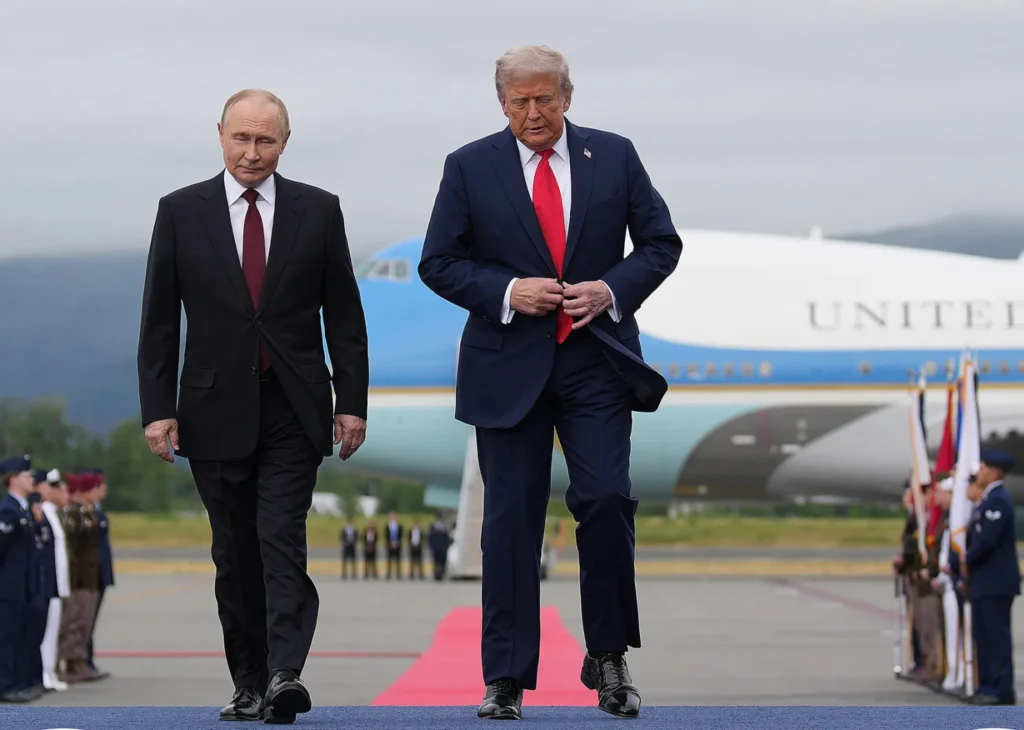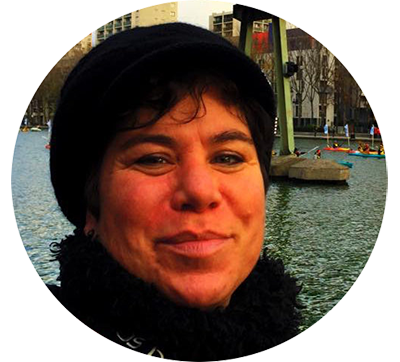Inside Putin’s Fossil-Fueled Victory Lap in Alaska

Inside Putin’s Fossil-Fueled Victory Lap in Alaska
It has been one of the most tumultuous and significant weeks in the global political battle over the war in Ukraine. It began last Friday, with the cringe-worthy summit in Alaska between President Donald Trump and Russian President Vladimir Putin, followed just three days later by seven of Europe’s most prominent leaders rushing to Ukrainian President Volodymyr Zelensky’s side, arriving at the White House to provide backup for a hastily scheduled meeting with Trump.
The unprecedented series of events resulted in Trump ceding to at least two of Putin’s most harmful demands: no cease-fire in Ukraine and no additional sanctions on Russian oil and gas.
Russia inched ever-closer to its goal of re-entering the global economy, unshackled by increased sanctions and with hefty benefits for the world’s largest fossil fuel companies in return, even offering up lucrative deals to ExxonMobil as the summit got underway. Ukraine tried to compete, proffering oil and gas contracts and an oil refinery project under the special terms reserved exclusively for American companies under Trump’s U.S.-Ukraine minerals agreement. Efforts are also underway to facilitate the increased sale of Russian oil and gas under the cover of American ownership.
The negotiations failed to quell Russia’s brutal war against Ukraine, which raged on, claiming lives and treasure as the talks took place. Instead, the episode underscored a treacherous new global balance of power, in which the U.S. government under Trump continues to ally with the world’s most brutal autocrats and dictators.
“Putin was completely shunned by the West, and here we have an American president who’s invited him to Alaska for something so symbolic and so important and he hasn’t even had to do anything to get there, except for continue fighting in Ukraine,” Sergey Radchenko, a Cold War historian at Johns Hopkins University, tells me. “Putin probably sees himself as having been able to score a major victory without paying anything for it.”
The summit, ostensibly about ending the war in Ukraine, focused as much if not more on opening investment and business collaborations between the U.S. and Russia. Though the “Ukrainian question” was declared to be the main item of the agenda, “much more important global issues” would be raised in Alaska, including ambitious plans for U.S. and Russian energy cooperation, senior Russian lawmaker Sergey Gavrilov told The Wall Street Journal ahead of the summit.
“Under the cover of the peace talks, Putin is just looking for political and economic gain including easing global economic pressure,” Yuliia Melnyk, an environmental policy consultant and the co-founder and director of Ukrainian environmental organization, Ekoltava, tells me. “One of the key solutions to this war is breaking dependence on fossil fuels.”
“I thought this war was black and white, who the bad guys are, but I don’t see the U.S. as the ‘good guy’’ anymore, and that means that the order of the world as it was is not collapsing, but you can see cracks,” Ukrainian Mariia Freeman tells me, sadness filing her voice. “It started with my country and the price for that is in lives.”
I met Freeman on a busy street corner in downtown Anchorage, Alaska, standing amid a sea of blue and yellow Ukrainian flags and bright yellow sunflowers. She had joined hundreds of other people lining the streets to protest the war in Ukraine on the eve of the summit. Smiling, waving, and holding up signs reading, “Where’s Zelensky?” “Stay home dictators!” and “I can see fascists from my window,” their chants were routinely drowned out by the booming horns of trucks and the honks of passing cars expressing solidarity. Freeman’s family fled Luhansk city in the Donbas region of Ukraine in 2014 following the Russian occupation and annexation, only to be forced out of Ukraine altogether after Putin’s 2022 full-scale invasion and war, the deadliest war in Europe since World War II.
Freeman now lives in Anchorage. “It feels like Putin is following me,” she says.

At the Alaska summit, Putin took a victory lap around Trump, beaming all the while. Trump, who loves autocrats and dictators — especially the fossil-fueled kind — and is doing his best to become one within the strained confines of American democracy, was devoid of his characteristic bombast, appearing instead visibly submissive to Putin.
Images of a red carpet literally rolled out for Putin to step from his plane and onto U.S. soil dominated Ukrainian social media, posted and reposted with expressions of shock and outrage. It was the opening salvo to a hero’s welcome on the tarmac of the U.S. military’s Joint Base Elmendorf-Richardson in Anchorage where Trump and Putin stood laughing and smiling together.
The International Criminal Court in The Hague issued an arrest warrant for Putin in 2023, charging him with war crimes in Ukraine. This means that he can only travel to those countries where the government won’t immediately hand him over to the court. Lucky for Putin, the U.S. is not a party to the ICC, so Trump was not obligated to turn him in, and had no intention of doing so.
Standing on the tarmac, ABC news reporter Rachel Scott shouted, “President Putin, will you stop killing civilians?” Both men shrugged it off, as her repeated questions were drowned out by handlers yelling loudly, “Thank you press, thank you press.” Putin then hopped into the “Beast,” the U.S. presidential limousine, riding side-by-side with Trump.
I joined a who’s-who of U.S., Russian, and other global media restricted to a nearby press tent watching the arrival unfold on our laptops. We noted other clues as to how the day’s events would unfold, watching video of Russian Foreign Minister Sergey Lavrov arrive in Alaska wearing a CCCP shirt, the Russian letters for the former Soviet Union of which Ukraine was once a part. (Alaska was also once a part of the Russian Empire.) A neighbor leaned in close to me and whispered conspiratorially, “I heard that on their flight to Alaska, Russia media were served Chicken Kyiv.”
The Russians smoked while we waited for hours alongside a row of porta-potties for the big event — a joint press conference between the two presidents. Around 2 p.m., we were rushed out of the tent and into a small well-kept theater.

If you watched the press conference live, you’d be forgiven for thinking you’d stumbled upon Russian television, as it was primarily conducted in Russian (we wore headphones providing translation). Against a blue and white backdrop reading, “Pursuing Peace,” Putin entered the stage and spoke first, delivering an 8.5 minute soliloquy. He emphasized his close bromance with Trump, whom he first identified merely as “my American counterpart”; the historic ties that bind Russia and the U.S., including the defeat of “common enemies”; and the “tremendous potential” of economic and trade ties, including in both the U.S. and Russian oil and gas-rich Arctic.
Putin mentioned Ukraine just five times, stating that “today’s agreements” would be a starting point for “the Ukrainian issue.” He called for peace, while reiterating his long-standing demand to end the “root causes of the war.” This is Putin’s shorthand for his list of maximalist demands on Ukraine, which rejects any cease-fire agreement and NATO membership, would neuter Ukraine’s military, cedes all areas of Ukraine now under Russian control to Russia, requires new elections (which Putin anticipates will replace Zelensky with a Russian-friendly puppet), and an end to sanctions on Russia.
Trump looked cowed and tired when it was his turn on the mic, speaking in a low gravelly voice for just a few minutes — a fraction of Putin’s time. He also emphasized their close relationship and praised the “tremendous Russian business representatives here.” He said they’d reached agreement on most key items and that he’d promptly call Zelensky and European leaders.
“Next time in Moscow!” Putin said, a huge smile spreading across his face as Trump wrapped up. “I could see it possibly happening, thank you very much, Vladimir,” Trump meekly replied.
They did not take a single question from reporters — highly unusual for Trump, but just the way Putin likes it. I had already noticed Fox News’ Sean Hannity standing behind me, a shit-eating grin on his face. As they walked rapidly off the stage, Hannity followed and promptly conducted an exclusive half-hour, one-on-one interview with Trump in the same room where the summit took place.
ARTICLE CONTINUES
Read Full Article at https://www.rollingstone.com/politics/politics-features/trump-putin-fossil-fueled-victory-lap-alaska-ukraine-1235414409/
